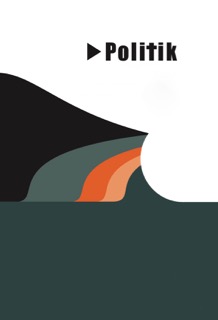Trampolinhuset: Kulturelt rum som politisk modspil
DOI:
https://doi.org/10.7146/politik.v21i2.111415Nøgleord:
Trampolinhuset, Aktivisme, Critical Spatial Practice, Jane Rendell, Architecture, PoliticsResumé
Trampoline House in Copenhagen North Western neighborhood is a social space for asylum seekers, activists and other interested. The space started as an art project. It was a critique of the conditions in the refugee camps, and the space aimed to be a free space and show an alternative solution to the immigration policy at the time. Trampoline House exists today, and the migration debate is still a present focal point in the political debate in Denmark.
With the concept Critical Spatial Practice architecture professor Jane Rendell (2006) argues, that architecture and spatial art has a potential in addressing critique, free space and potentially change. This paper discusses, with starting point in the Trampoline house and Rendell’s theoretical concepts, how cultural space can be a political counter strategy, and how art can play a role within this concept. Specifically, the paper explores to which extend and how the Trampoline House as space and art project has been a political player and change agent.
Referencer
Bishop, C. (2012). Artificial Hells: Participatory Art and Spectatorship. New York: Verso.
Bishop, C. (2006). The Social Turn: Collaboration and its Discontents. New York: Art Forum.
Blankholm, L. (2011). Trampolinhuset: Fristed og forsamlingshus. Modkraft. Tilgængelig på: http://modkraft.dk/node/14931 [Tilgået 01.10.18]
Bonde, L. (2011). Kunst i det godes tjeneste. Weekendavisen, 24. marts 2011.
Goll, M. (2017). Trampolinhuset: demokratisk medborgerskab øger integrationen. Altinget. Tilgængelig på: https://www.altinget.dk/arbejdsmarked/artikel/trampolinhuset-demokratisk-medborgerskab-oeger-integrationen [Tilgået 01.10.18]
Wehl, S.B. and Hansen, F. (2018). Interview med Frederikke Hansen, 25.09.2018.
Jensen, O. B. (2004). Byen, magten og netværket. Dansk Sociologi, årg. 15(3), s. 53-65.
Klokhøj, J. (2011). Studerende giver asylansøgere en stemme. Uniavisen. Tilgængelig på: https://uniavisen.dk/studerende-giver-asylansoegere-en-stemme/ [Tilgået 01.10.18]
Kristensen, B. F. (2016). Trampolinhuset: »Vi tilbyder nogle gange lidt mere nær hjælp. Vi er ikke en del af systemet«. Politiken. Tilgængelig på: https://politiken.dk/indland/samfund/art5619923/Trampolinhuset-%C2%BBVi-tilbyder-nogle-gange-en-lidt-mere-n%C3%A6r-hj%C3%A6lp.-Vi-er-ikke-en-del-af-systemet%C2%AB [Tilgået 01.10.18]
Kwon, M. (2004). One Place After Another. Cambridge, Mass.: MIT Press.
Mouffe, C. (2013). Agnostics - Thinking the World Politically. London: Verso.
Phillips, A. (2010). Too Careful: Contemporary Arts Public Making. I: Phillips, A. and Miessen (eds.), Actors, Agents and Attendants: Caring Culture: Art, Architecture and Politics of Public Health. M. Amsterdam: Sternberg Press, s. 35-56.
Rendell, J. (2006). Art and Architecture: A Place Between. London: I. B. Tauris.
Downloads
Publiceret
Citation/Eksport
Nummer
Sektion
Licens
Forfattere, der publicerer deres værker via dette tidsskrift, accepterer følgende vilkår:
- Forfattere bevarer deres ophavsret og giver tidsskriftet ret til første publicering, samtidigt med at værket er omfattet af en Creative Commons Attribution-licens, der giver andre ret til at dele værket med en anerkendelse af værkets forfatter og første publicering i nærværende tidsskrift.
- Forfattere kan indgå flere separate kontraktlige aftaler om ikke-eksklusiv distribution af tidsskriftets publicerede version af værket (f.eks. sende det til et institutionslager eller udgive det i en bog), med en anerkendelse af værkets første publicering i nærværende tidsskrift.
- Forfattere har ret til og opfordres til at publicere deres værker online (f.eks. i institutionslagre eller på deres websted) forud for og under manuskriptprocessen, da dette kan føre til produktive udvekslinger, samt tidligere og større citater fra publicerede værker (se The Effect of Open Access).

